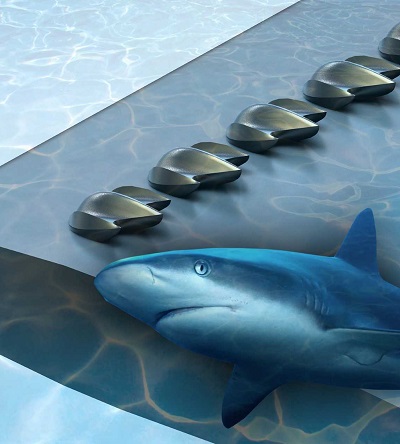Podcast: Play in new window
BOB HIRSHON (host):
Shark aerodynamics. I’m Bob Hirshon and this is Science Update.
Shark skin may appear smooth, but it’s actually made up of microscopic, tooth-like structures that reduce drag, allowing the animals to swim more efficiently. Understanding these structures could lead to more energy-efficient aerial devices, according to Harvard engineers Gus Domel and Mehdi Saadat, writing in the Journal of the Royal Society Interface. Their team created scaled-up models of the structures using a 3D printer, testing their aerodynamic properties when attached to wing-like blades. Domel says the structures didn’t just reduce drag, but led to major increases in lift. In real-world machines, this could translate to energy savings.
GUS DOMEL (Harvard University):
Nature’s had such a headstart through evolution that it’s good to look to nature for inspiration even for manmade aerial devices such as drones, wind turbines, and airplanes.
HIRSHON:
…And that could reduce fuel consumption in the long run. I’m Bob Hirshon, for AAAS, the science society.
Story by Susanne Bard

